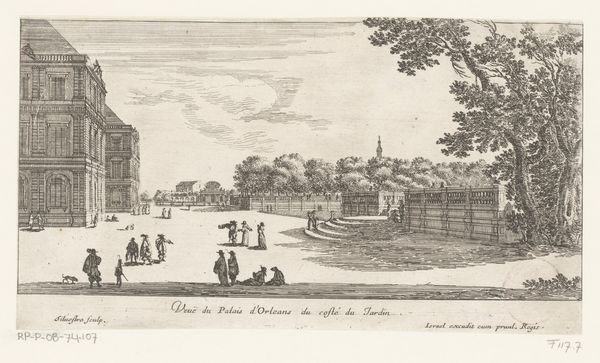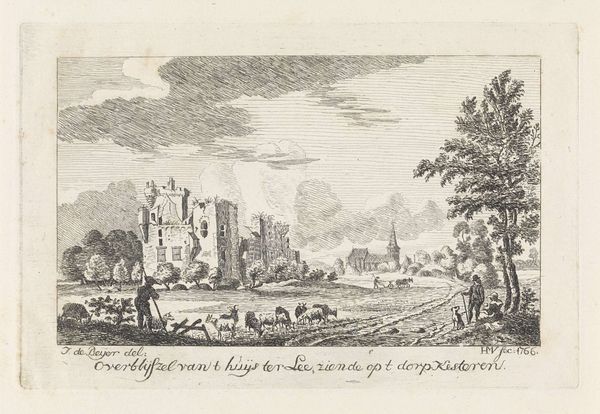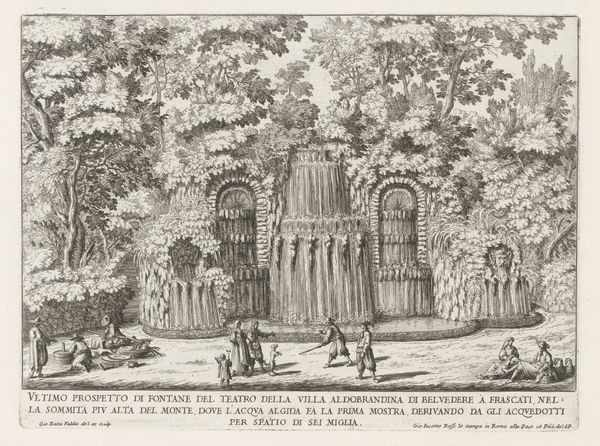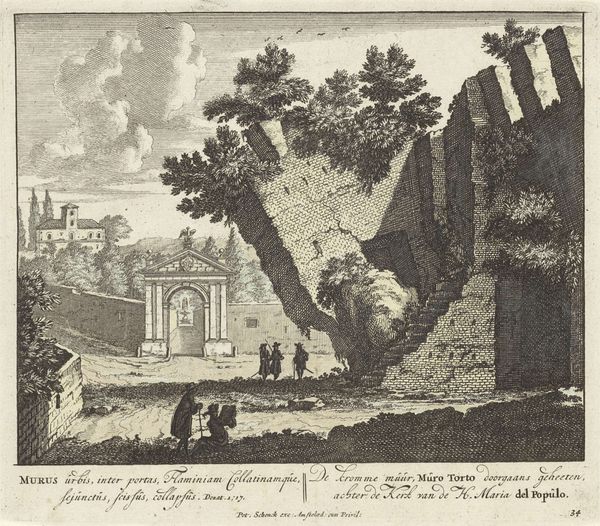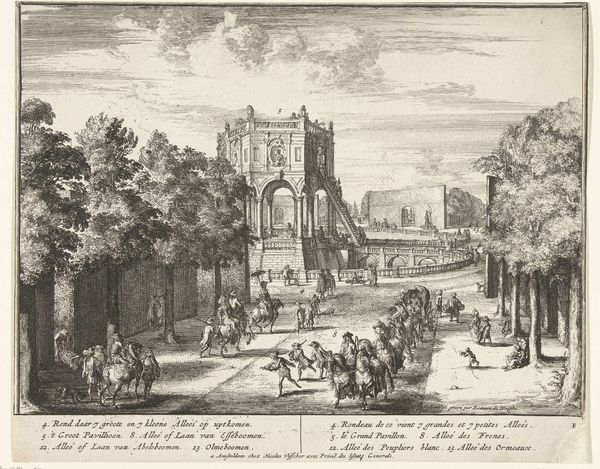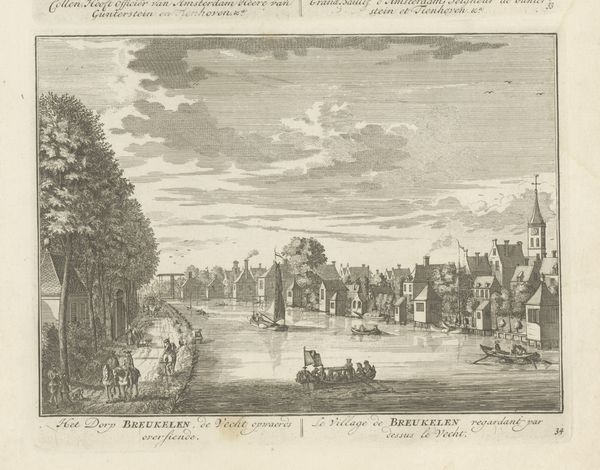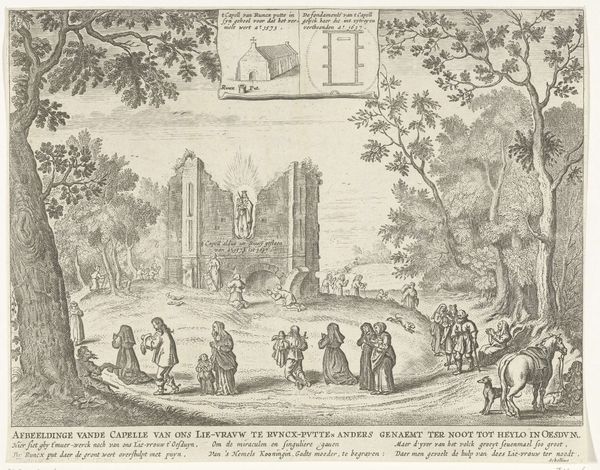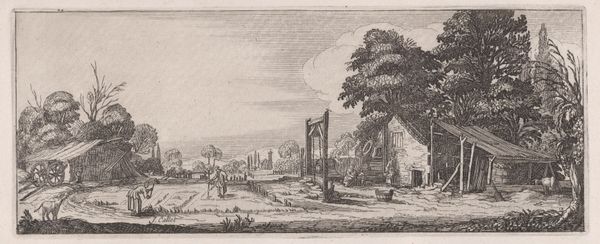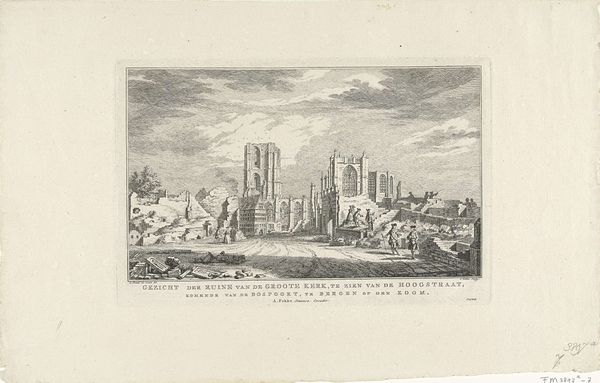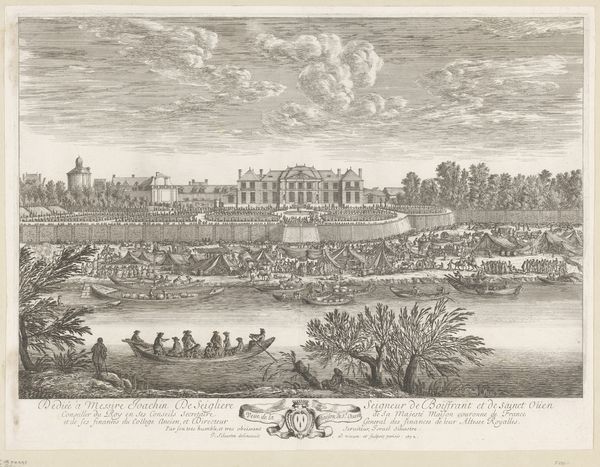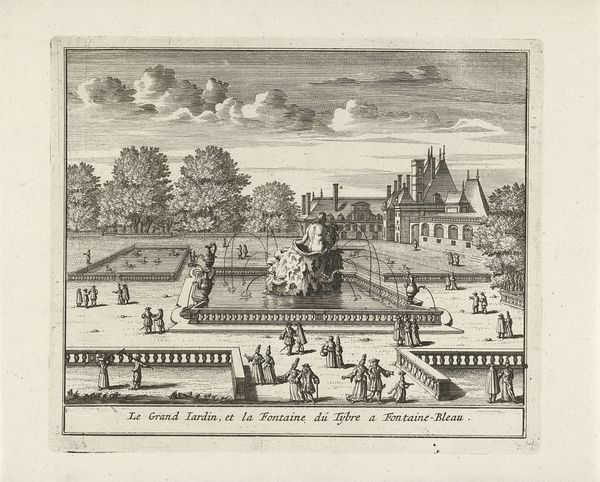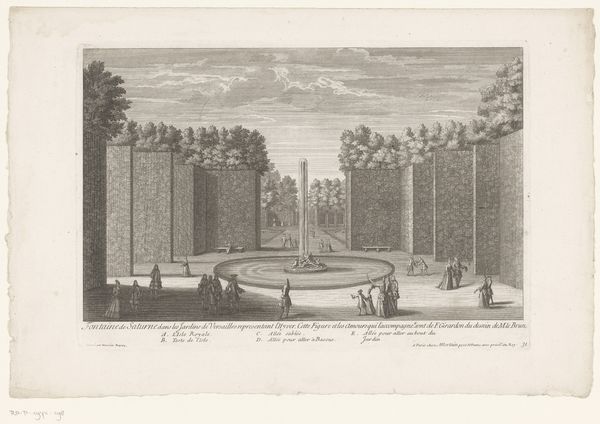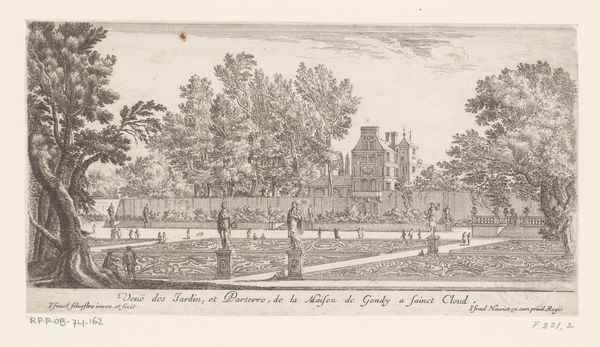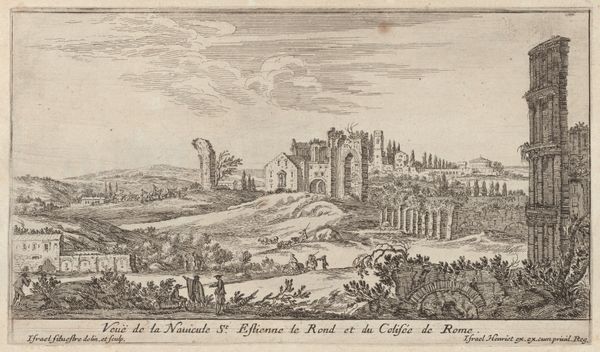
Fontane delle Mete en cipressen in de tuinen van de Villa d'Este te Tivoli 1653 - 1691
0:00
0:00
print, engraving
#
garden
#
baroque
# print
#
old engraving style
#
landscape
#
engraving
Dimensions: height 216 mm, width 317 mm
Copyright: Rijks Museum: Open Domain
Curator: This engraving captures the gardens of the Villa d'Este in Tivoli, titled "Fontane delle Mete en cipressen in de tuinen van de Villa d'Este te Tivoli" created by Giovanni Francesco Venturini sometime between 1653 and 1691. Editor: It feels incredibly structured, yet softened by the depiction of the water features. The strong lines create a deliberate composition, bisected perfectly in the center. The shading, the variations in line weight…it’s quite compelling in its rigor. Curator: Absolutely. The formality of Baroque gardens, evidenced here, mirrored the era's emphasis on power and order. Consider how these carefully designed landscapes reflected the socio-political control desired by elite patrons. Gardens like this served as stages for display and diplomacy. Editor: Interesting how the geometric precision provides a framework to capture a picturesque representation of nature. The strategic alignment of the towering cypresses emphasizes the symmetry and scale, and this structured layout emphasizes that natural expression must bow before man-made design. I would be interested in investigating how this hierarchy works within semiotic structuralism. Curator: Think also about the intended viewer of this engraving. Venturini was creating a record, disseminating the grandeur of the Villa d’Este beyond those who could physically visit. The print served as propaganda of sorts, solidifying the Este family’s influence. Editor: In terms of visual rhetoric, I agree, and those monumental fountains introduce an interesting element. Water, naturally chaotic, contained and forced upward…its dynamic yet obedient presence heightens the sense of controlled nature, emphasizing order within a space and mirroring societal structures. Curator: It is a wonderful encapsulation of power in the garden as a symbolic tool. Considering these nuances sheds light on how landscapes were wielded as expressions of control during this period. Editor: Examining the calculated lines alongside the symbolic staging certainly offers an intriguing lens through which to dissect Baroque power dynamics.
Comments
No comments
Be the first to comment and join the conversation on the ultimate creative platform.
